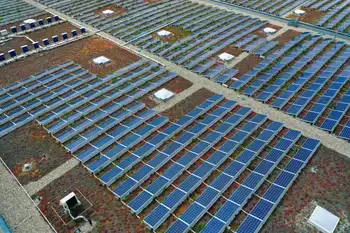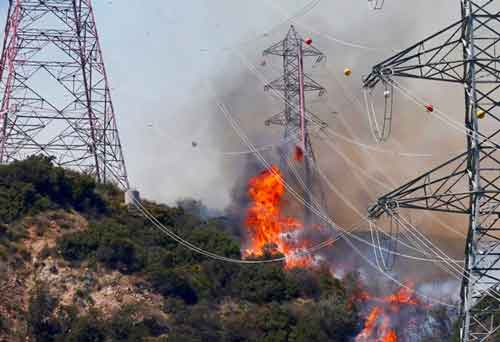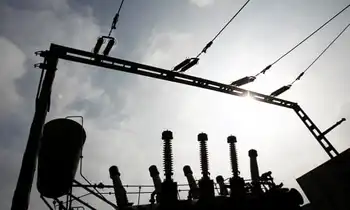Will 2008 be the last record year for coal?
By Gillette News-Record
Protective Relay Training - Basic
Our customized live online or in‑person group training can be delivered to your staff at your location.

- Live Online
- 12 hours Instructor-led
- Group Training Available
The U.S. Department of Energy reported a 3.1 percent increase in total coal production in Wyoming last year. The state has set a record in production once again, but coal producers might have to tame their appetite for record productions as they face the dictates of a recession, analysts say.
Campbell County area coal mines produced about 3 percent more coal last year than in 2007 when production hit 440.4 million tons, according to the DOE and News-Record estimates. Those record-breaking numbers have been a trend for the past decade. More concrete numbers will be available later this month.
Coal producers all profited last year on the worldwide hunger for energy that spilled over from 2007. Flooding in Midwestern states during the second quarter of 2008 slightly decreased shipments from the Powder River Basin, but both the railroad and coal industries were quick to recover in the third quarter. The Mine Safety and Health Administration reported basin production at 308.3 million in the first three quarters. Without those disruptions, annual production number could have rolled in even higher.
“That 3.1 (percent) increase in output includes the second quarter hit by floodings. You might argue that it could have been even a stronger year without these events,” said Paul Forward, a Stifel, Nicolaus & Co. Inc. coal analyst.
When the global financial crisis started to unfold in September, prices on metals, including steel, dropped. A drop in coal prices followed. Powder River Basin coal didnÂ’t suffer as much as coal from the Appalachian Basin, which dropped by about $40 per short ton after the financial meltdown. Powder River Basin prices fluctuated only slightly from $15 per short ton to $12 per short ton, and have settled at $13.
But area producers had to deal with the decrease in demand from East Coast customers. When exports of high-priced coal from the eastern markets to China increased, many power plants turned to Powder River Basin coal because of its lower cost. Coal exports are expected to be down this year because of slow global metallurgical activity. With that chain reaction, there will be less need for Campbell County area coal as a substitute for higher-priced coal.
“Power demand doesn’t fall in the recession as much as steel does,” Forward said. “And the risk for Powder River Basin in the downturn is indirect risk from steel mill demand going down.”
Coal analysts predict uncertainty in coal prices this year. With that prediction they also advise coal producers, especially those operating in the Powder River Basin, to cut their output.
“We are also disappointed by the Powder River Basin producers who, instead of cutting production, continue to produce at a rapid pace despite record-level inventory and slowing demand,” said FBR Capital Markets analysts said in their December report.
Big players already announced cutbacks in coal production in one way or another. Arch Coal had its best financial year on record yet, in October, it decided to idle a dragline and a shovel at its Black Thunder mine. In January, Peabody announced it would trim its Powder River Basin production by 10 million tons.
“We are electing to leave tons in the ground to preserve our valuable reserve base for future periods when market conditions are more attractive,” Greg Schaeffer, vice president for external affairs for Arch’s western operations, said at the time. “As we’ve demonstrated in the past, Black Thunder mine can operate very efficiently at a range of volume levels.”
Stifel, Nicolaus & Co. analysts calculated a possible 7 million ton drop in production in Black Thunder if the idled equipment remains offline for a full year.
These cutbacks are meant to help those companies maintain the price in a slackening market. But in the scope of mining activity in the Powder River Basin, they hardly ever would be noticed. Even with these reductions, coal analysts expect a 20 million ton surplus in the overall U.S. coal market this year. That means if coal companies donÂ’t slow down, their customers will force them to, according to a December FBR report.
“The supply and demand are pretty well balanced in the U.S. market,” said Forward, of Stifel, Nicolaus & Co. “When you have volumes pick up that much when the economy slows, you have the risk of oversupply of coal, and that’s what companies are trying to address, led by Arch and Peabody announcements.”
“We would expect production to be flat to slightly down in 2009,” said Meredith Bandy, a BMO Capital Markets coal analyst.
Foundation Coal already had utilities ask to defer shipments, the FBR report said.
While some coal insiders say that the industry saw decreased shipments to the East, BNSF Railway also had a record year ” 274.7 million tons in 2008, beating 2007 record shipments by 5.9 million tons.
“These numbers speak for themselves,” said Patrick Hiatte, BNSF general director of media relations.
Powder River Basin coal continued to enjoy high demand from energy producers this year. Coal consumers turn to the basin as they await regulations on cleaner energy from the new federal administration.
No one knows how long the recession will last, but industry insiders are sure that demand for Powder River Basin coal will continue. Once the recession is over, the world will need more energy to revive economic development. Peabody predicted a need for an extra 1 billion tons of coal in the next several years because 300 gigawatts of new coal-fueled generation is under construction worldwide. Campbell County utilities also predict a growing demand for electricity for their customers in northeast Wyoming and in the northwestern states.
And coal will remain the primary source for that energy, no matter how aggressively renewable sources develop. The coal industry now faces one more challenge ” how to burn cleaner coal.
“I think the most pressing concern is the U.S. economy,” Bandy said. “But longer term, under a democratic administration, the development of clean coal technologies is probably necessary for coal to maintain its dominant share of U.S. electricity generation.”











